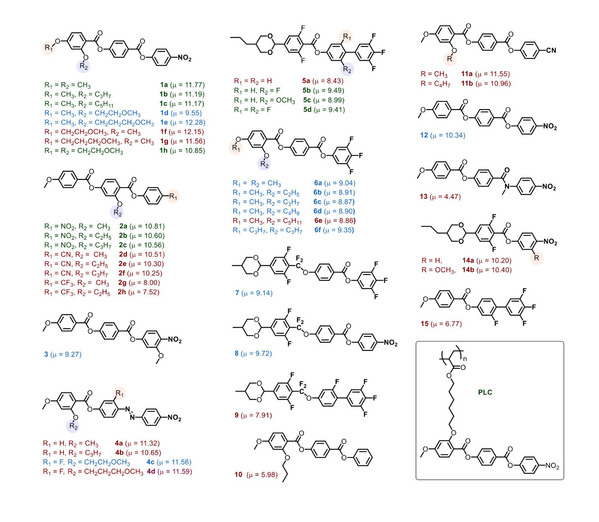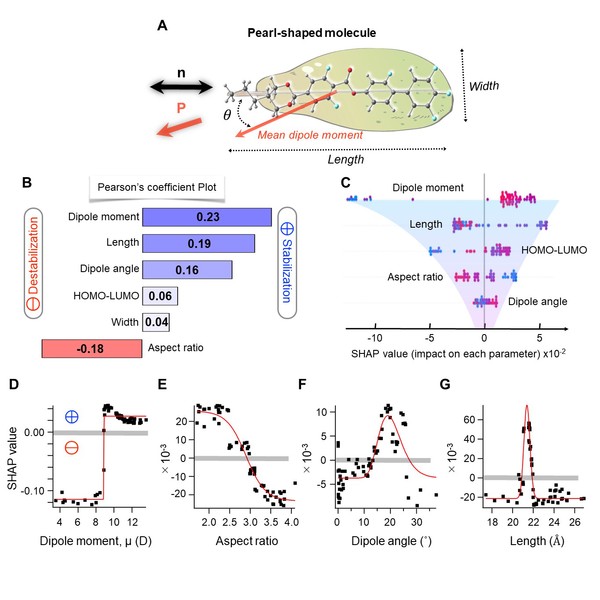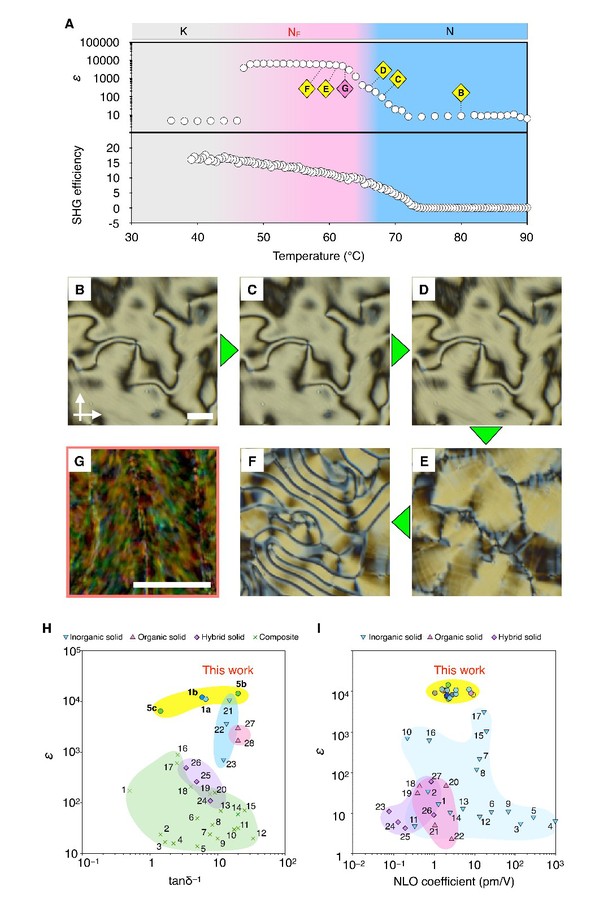Over the last few decades, people have developed some new barium titanate-type and two-dimensional crystalline materials that the dielectric constant ɛ up to about 102-103, which make it possible for advanced electronic devices such as high energy-density dielectric films, high-performance capacitors, and high-density memory. While barium-titanate-type crystals serve as high-ε dielectrics owing to the breaking of the cubic symmetry in bulk, 2D crystals do so primarily due to the huge specific surface area of ordered atoms on the surface. These paradigms give a common perspective that the incidence of the high-ε state is only allowed when the symmetry of material is broken (thereby generally non-fluidic) and the thickness of the material is small, so that a net switchable polarization can remain at a high density and contribute to the high value of ε. Massive progress in this framework has been made in the last few decades, and it has been recognized that a majority of other materials, e.g. non-crystalline materials, are out of consideration for achieving a high-ε state because the two characteristics of broken symmetry and fluidity barely can coexist in the same material. Very recently in 2017, the first example of fluidic material with superhigh-ɛ dielectric (ε~104 @1kHz) was reported, exhibiting ferroelectric response, and on this account, the type of material is currently commonly referred to as ferroelectric nematic liquid crystal (NF). These ferroelectric nematic liquid crystalline materials with a fascinating combination of huge ɛ and high fluidity are attracting increasing concern and exploration.Nevertheless, there are plenty of critical issues that need to be overcome to push the development of these materials for practical applications.

Fig. 1. Synthetic ferroelectric nematic liquid crystal molecular library.
In this work, we establish a generic molecular guideline towards the rational design of giant-ε polar fluids with the aid of machine learning and make full analyses of polarizing light microscopy (POM), second harmonic generation (SHG) and dielectric spectroscopy. The results offer a clear statistical guideline for the molecular design of the NF materials: (1) the dipole moment, μ > 9 D; (2) the geometrical aspect ratio (AR) defined as the length per the width, AR < 2.5; (3) the angle of the dipole should be in a moderate range, offering an oblique dipole (~20°). Especially, if the dipole moment is lower than the threshold of 9 D, the traditional nonpolar nematic phase appears. This situation is supported by the prediction by Born in 1916, that a ferroelectric anisotropic fluid would exist if the molecular dipole is large enough to overcome the thermal fluctuation.

Fig. 2. Machine learning–driven understanding of molecular parameters stabilizing the NF phase.
Notably, though all the synthesized NF molecules have distinct chemical structures, they exhibit a similar structural evolution on cooling via 4 steps (Figs. 3B-3F): Schlieren texture (N phase)→stripe texture (N phase)→defect-free band texture (N phase)→band texture with line disclination (NF phase). Generally, from the isotropic state down to the middle of the N phase, the materials show relatively low dielectricity (e.g. ε < 100) and vanishingly small SH signal, similar to traditional N materials (Fig. 3A). However, as we further decrease temperature towards the N- NF transition, both the dielectric permittivity and the SH signal grow continuously and dramatically, confirming the emergence of the polar nature in the N phase as a pretransitional phenomenon.We further simulated the POM images for the structures and found that, only the Néel Type I structure well reproduces the POM textures under various conditions, supporting the Néel Type I structure is close to the ‘real’ form of the NF phase.

Figure 3. Temperature dependence of the dielectric and nonlinear optical response of NF liquid crystal (A), POM texture changes (B-E), and dielectric constant and nonlinear optical response compared with other materials (H-I).
Finally, we highlight that the polar nematic materials exhibit giant dielectric permittivity and high nonlinear coefficients. The NF materials (1a, 1b, 5b, 5c, et al.) have highly superior properties of dielectric permittivity (ε over 104 below 10 kHz) and low tanδ–1 (0.05 < tanδ < 0.20), which represent the state of the art functionality in soft matters. The giant dielectricity in the NF materials is even comparable to well-known inorganic ferroelectric or relaxor materials. Besides, for the NF materials, one can notice that the high NLO coefficient ranging between 1 and 10 pm V-1 which are comparable to some ferroelectric organic- and hybrid-solids.Hence, the excellent combination of giant dielectricity and NLO properties in the NF materials, together with the fluidity or flexibility, is rather unique and offers vast technological potentials for high-performance supercapacitors, nonlinear optical elements, memory device and electrooptic functional devices.
The first authors of this article are Ph. D. student Jinxing Li, collaborator Dr. Nishikawa, and Dr. Kougo; the corresponding authors are Prof. Mingjun Huang and Prof. Satoshi Aya.For complete article information, please refer to the link: Li, J.#; Nishikawa, H. #; Kougo, J. #; Zhou, J.; Dai, S.; Tang, W.; Zhao, X.; Hisai, Y.; Huang, M.*; Aya, S.*, Development of ferroelectric nematic fluids with giant-ε dielectricity and nonlinear optical properties. Science Advances2021, 7 (17), eabf5047.
https://advances.sciencemag.org/content/7/17/eabf5047
